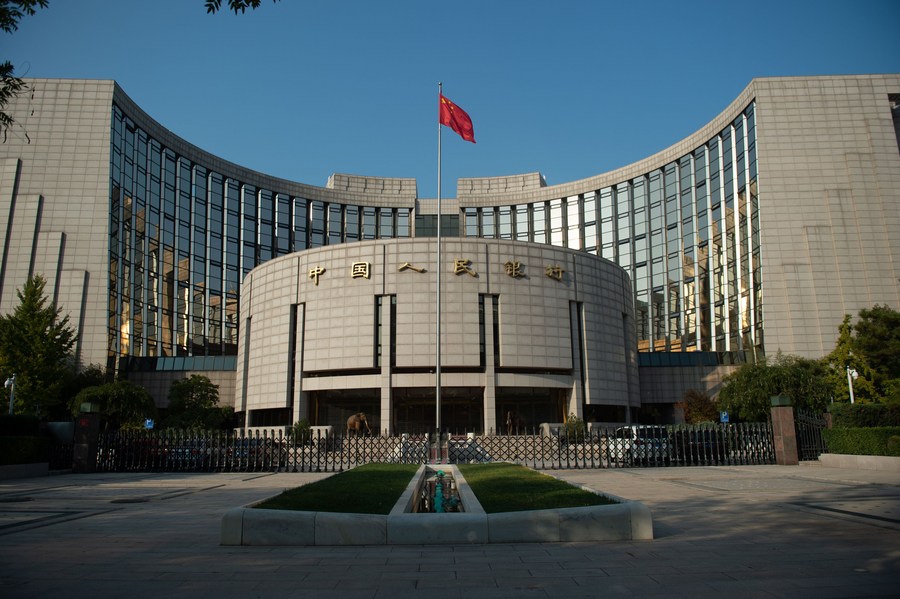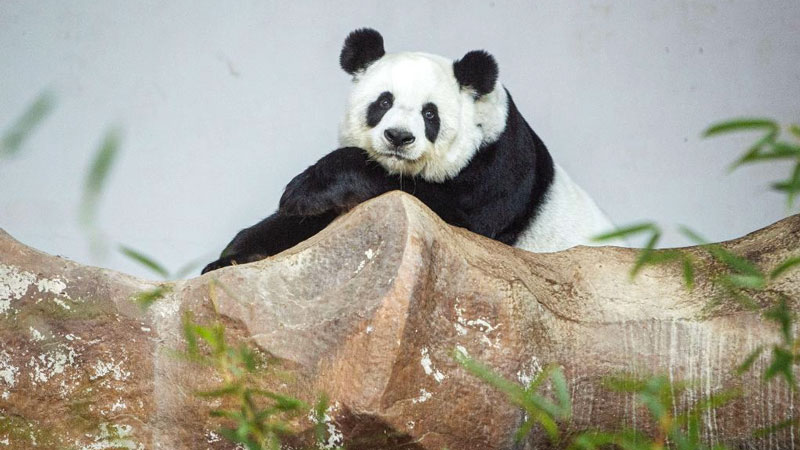Stay stable -- China combines tools to navigate 2022 economic headwinds

Photo taken on Oct. 19, 2020 shows an exterior view of the People's Bank of China in Beijing, capital of China. (Xinhua/Peng Ziyang)
BEIJING, Dec. 28 (Xinhua) -- China, the world's second-largest economy, has experienced an unusual journey in 2022, a year featuring "factors exceeding expectations" that tested the decision-makers' macro management know-how.
Domestic flare-ups of COVID-19 and the geopolitical conflicts in other parts of the world have complicated the country's growth trajectory.
China's economy got off to a robust start by expanding 4.8 percent in the first quarter. Its GDP slid to 0.4 percent in Q2 and rebounded to 3.9 percent in Q3.
The downturn in Q2 prompted a swift government response, with a set of policy package and follow-up measures rolled out to retain overall economic stability.
"We should maintain strategic resolve and continue to manage our own affairs well," a tone-setting meeting of the Political Bureau of the Communist Party of China Central Committee stressed in late July. This meeting analyzed the economic situation and determined the economic strategy for the second half of the year.
NO "FLOOD-LIKE" STIMULUS
Unlike many economies that resorted to monetary easing to spur growth, China has refrained from massive stimulus, in order to avoid compromising longer-term interests.
The country's central bank reiterated "no flood-like stimulus" in its three quarterly policy implementation reports, sending a clear signal of its determination to adhere to a prudent monetary policy stance.
Instead of cutting interest rates, the People's Bank of China (PBOC) has reduced the reserve requirement ratio twice this year, to allow financial institutions to have more liquidity at their disposal to serve the real economy.
At the same time, structural monetary policy tools have been used to increase support for agriculture, rural areas and farmers, small and micro businesses, private enterprises and green development.
"Judging from the economic operation, China's macro policies have been implemented appropriately," said PBOC governor Yi Gang.
"Overall economic stability has been achieved while prices remain basically stable against global high inflation. A balance has been struck to take care of both internal and external needs," Yi added.
"RETAIN GREEN MOUNTAINS"
China's vast community of market entities, over 160 million in total, are the major recipients of the country's targeted supportive policies.
In addition to tailored credit support, the Chinese government has launched wide-range tax and fee cuts to reduce financial burdens on businesses, so that they -- often referred to as "green mountains" due to their fundamental role in fueling economic expansion -- are kept afloat.
The country's value-added tax credit refunds reached nearly 2.4 trillion yuan (about 344.43 billion U.S. dollars), a record high and more than 3.5 times the annual amount of last year.
By early November, the tax and fee payment per 100 yuan of operating revenue dropped 5.3 percent overall for the 100,000 key enterprises monitored by taxation authorities, while the reduction for equipment manufacturers within these key enterprises was 9.6 percent.
"Despite multiple challenges, China's market entities have managed strong resilience and vitality, which is what underpins our confidence for maintaining stable and healthy economic development," Premier Li Keqiang said in November.
WALK A FINE LINE
In April, Chinese leadership proposed that the country must contain the epidemic, stabilize the economy and keep development on track.
"It embodies a systemic theory of finding dynamic equilibrium among multiple objectives," said Liu Shangxi, head of the Chinese Academy of Fiscal Sciences.
The outbreaks of COVID-19 and the cooling real estate sector are among the major factors weighing on China's economy this year, and the government has kept fine-tuning related policies to reduce their impact while guarding against potential risks.
On Nov. 11, China introduced 20 prevention and control measures for further optimizing its COVID-19 response, shortening the quarantine period for close contacts and inbound travelers, among others.
Based on scientific evaluation of the virus impact, the policy for epidemic prevention and control was further adjusted earlier this month, while still setting guidelines to protect a vulnerable community like the elderly.
In light of shrinking real estate investment and its spillover effects, the government unveiled a combination of steps including credit, bond issuance and equity financing in Q4, to bolster the heavyweight property industry.
While offering abundant liquidity and encouraging city-specific policies, the country has underscored its long-held principle of "housing is for living in, not for speculation," specifying the do's and don'ts of financial aid, so as to avoid housing price swings.
"Policy coordination will be strengthened to form synergy for high-quality development in 2023," Chinese leadership pointed out at the annual central economic work conference held in mid-December.
Photos
Related Stories
- China works to vitalize market entities
- China's economy continues to drive world economic recovery and growth in 2023
- China's critical role in boosting global growth in 2023
- China keeps injecting vitality into global recovery
- Chinese localities make bold moves to stabilize economy
- Official: Economy has survived worst moment
Copyright © 2022 People's Daily Online. All Rights Reserved.









